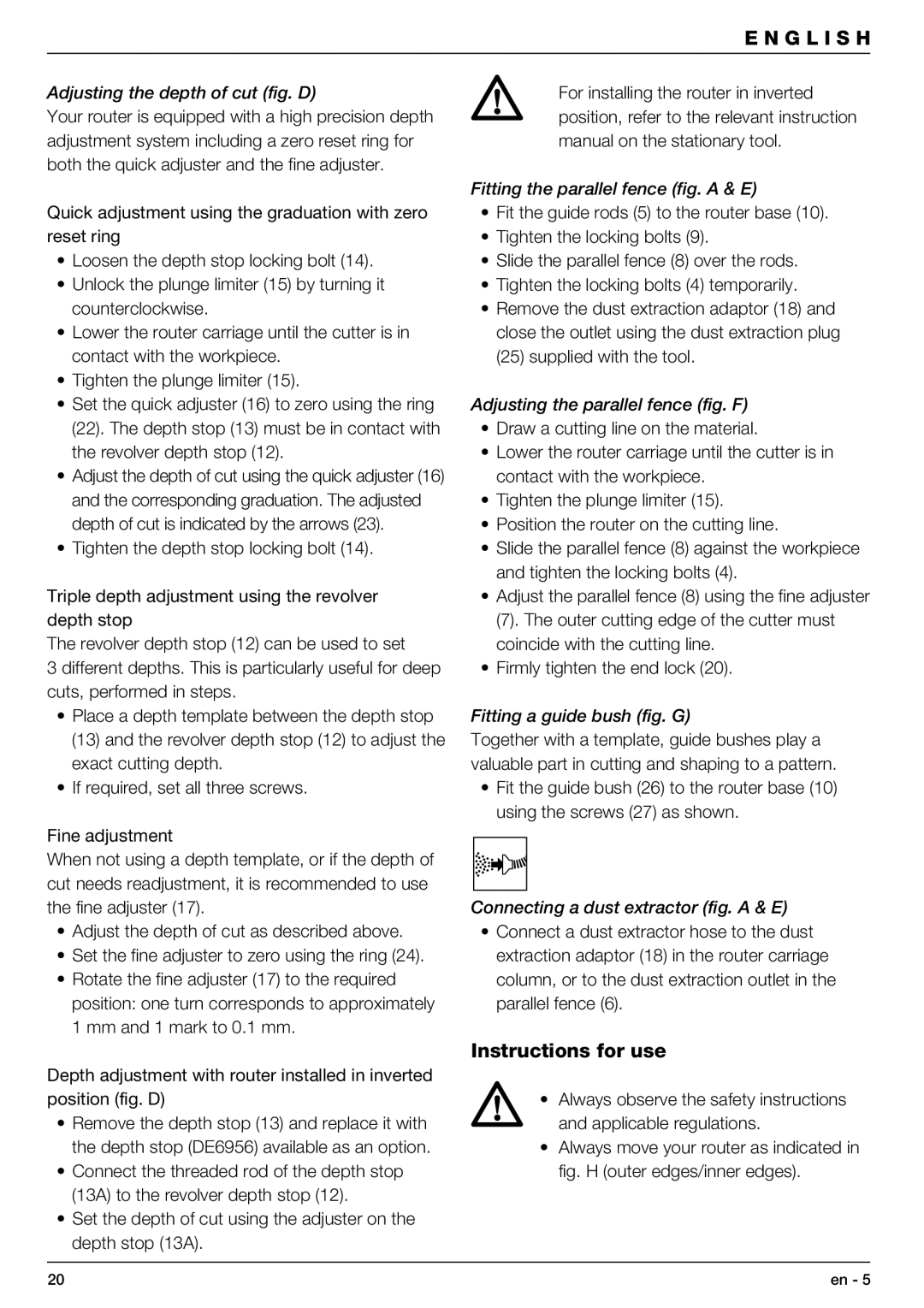DW621 specifications
The DeWalt DW621 is a premium plunge router that showcases the brand's commitment to quality and performance for both professionals and serious woodworking enthusiasts. This router is specifically designed for precision woodworking tasks, making it an essential tool for cabinet makers, furniture creators, and hobbyist woodworkers alike.One of the standout features of the DW621 is its powerful 2.25 horsepower motor. This robust motor is designed to handle various routing tasks, from trimming to mortising, without compromising speed or stability. With its variable speed control that ranges from 8,000 to 24,000 RPM, users can easily adjust the speed to match the specific material being worked on and the desired finish. This feature enhances the router’s versatility and ensures optimal results for different applications.
The DW621 also incorporates electronic soft-start technology, which allows the motor to gradually ramp up to full speed. This minimizes startup torque and helps prevent the router from "jumping," ensuring a smoother and more controlled operation right from the start. Additionally, the unit is equipped with a precise depth adjustment system. The depth adjustment ring is easy to read and offers micro-fine depth adjustments, enabling users to achieve the exact depth needed for intricate cuts.
Another significant characteristic of the DW621 is its dual, durable precision-machined aluminum bases. The fixed base is designed to be sturdy and provides stability during use, while the plunge base features ergonomic handles for better control and comfort. The plunge mechanism allows for smooth and accurate plunging, which is crucial for creating clean and precise cuts in various applications.
Safety features are also a priority with the DeWalt DW621. The router is designed with an integrated dust collection system that helps maintain a cleaner workspace by capturing dust and debris during operation. This feature not only improves visibility for the user but also contributes to a safer working environment.
In summary, the DeWalt DW621 is more than just a plunge router; it combines powerful performance with precision and user-friendly features. Its robust motor, variable speed control, soft-start technology, and precise depth adjustments make it a top choice for any serious woodworking project. With its blend of durability, functionality, and safety features, the DW621 remains a trusted tool in the woodworking industry, ensuring that users can achieve exceptional results every time.

